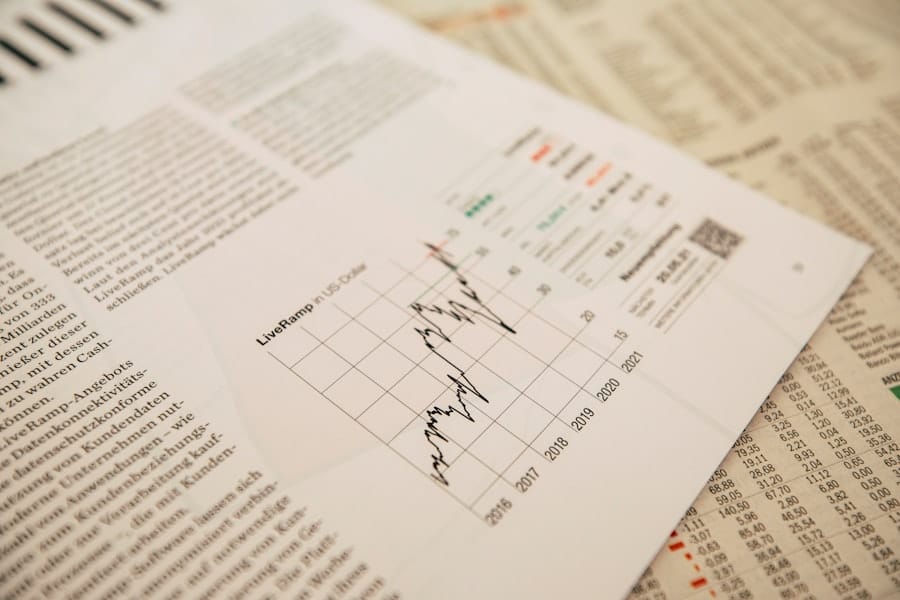The rapid evolution of cryptocurrency has transformed the financial landscape, offering unprecedented opportunities for investment and innovation. However, this burgeoning market has also attracted a myriad of fraudulent activities, necessitating robust security measures to protect users and maintain trust. As crypto exchanges become increasingly popular, they face the daunting challenge of safeguarding their platforms against sophisticated fraud schemes.
In this context, artificial intelligence (AI) has emerged as a powerful ally in the fight against fraud, providing advanced tools and methodologies to detect and prevent illicit activities. AI-driven fraud detection systems leverage machine learning algorithms and data analytics to identify patterns and anomalies that may indicate fraudulent behavior. By analyzing vast amounts of transaction data in real-time, these systems can flag suspicious activities, enabling exchanges to respond swiftly and effectively.
The integration of AI into fraud detection not only enhances security but also streamlines operations, allowing exchanges to focus on growth and user experience while minimizing risks associated with fraud.
Key Takeaways
- AI-driven fraud detection is revolutionizing security in crypto exchanges by leveraging advanced technology to identify and prevent fraudulent activities.
- Security challenges in crypto exchanges include hacking, phishing, and insider threats, making it crucial for platforms to adopt advanced measures for fraud detection and prevention.
- AI plays a critical role in detecting and preventing fraud in crypto exchanges by analyzing large volumes of data in real-time to identify suspicious patterns and activities.
- The benefits of AI-driven fraud detection for crypto exchange security include improved accuracy, faster detection, reduced false positives, and enhanced overall security posture.
- Successful case studies demonstrate the effectiveness of AI-driven fraud detection in identifying and mitigating fraudulent activities, highlighting the potential for widespread adoption in the industry.
Understanding the Current Security Challenges in Crypto Exchanges
Crypto exchanges are particularly vulnerable to various security threats due to their digital nature and the decentralized framework of cryptocurrencies. One of the most pressing challenges is the prevalence of hacking incidents, where cybercriminals exploit vulnerabilities in exchange platforms to steal funds or sensitive user information. High-profile hacks, such as the 2014 Mt.
Gox incident, which resulted in the loss of approximately 850,000 Bitcoins, underscore the critical need for enhanced security measures. In addition to hacking, exchanges face threats from insider fraud, where employees or contractors exploit their access to manipulate transactions or siphon off funds. Phishing attacks are another common tactic employed by fraudsters, who trick users into revealing their login credentials or private keys through deceptive emails or websites.
The anonymity afforded by cryptocurrencies further complicates the detection of fraudulent activities, as it becomes challenging to trace illicit transactions back to their origin. These multifaceted security challenges necessitate a comprehensive approach to fraud detection that can adapt to the evolving tactics employed by criminals.
The Role of AI in Detecting and Preventing Fraud in Crypto Exchanges

AI plays a pivotal role in enhancing the security framework of crypto exchanges by employing advanced algorithms that can analyze transaction patterns and user behavior at an unprecedented scale. Machine learning models can be trained on historical transaction data to identify normal behavior patterns for individual users and the overall exchange ecosystem. Once these patterns are established, the AI system can detect deviations that may indicate fraudulent activities, such as unusual transaction sizes or frequencies that fall outside typical user behavior.
Moreover, AI systems can continuously learn and adapt to new threats as they emerge. For instance, if a new type of phishing attack becomes prevalent, machine learning algorithms can be updated with this information, allowing them to recognize similar patterns in real-time. This adaptability is crucial in a rapidly changing environment like cryptocurrency, where fraud tactics evolve quickly.
Additionally, AI can enhance the efficiency of fraud detection processes by automating routine tasks, allowing human analysts to focus on more complex cases that require nuanced judgment.
Benefits of AI-Driven Fraud Detection for Crypto Exchange Security
The implementation of AI-driven fraud detection systems offers numerous benefits for crypto exchanges seeking to bolster their security measures.
Traditional fraud detection methods often rely on manual reviews and rule-based systems that can be slow and prone to errors.
In contrast, AI systems can analyze millions of transactions within seconds, significantly reducing response times and minimizing potential losses. Another key benefit is the reduction of false positives, which can be a significant issue in traditional fraud detection systems. High rates of false positives can lead to unnecessary account freezes or transaction delays, frustrating legitimate users and damaging the exchange’s reputation.
AI algorithms can be fine-tuned to improve accuracy by learning from past incidents and user feedback, resulting in a more reliable detection system that balances security with user experience. This precision not only enhances trust among users but also allows exchanges to operate more efficiently without being bogged down by excessive manual intervention.
Case Studies: Successful Implementation of AI-Driven Fraud Detection in Crypto Exchanges
Several crypto exchanges have successfully integrated AI-driven fraud detection systems into their operations, showcasing the effectiveness of this technology in combating fraud. One notable example is Binance, one of the largest cryptocurrency exchanges globally. Binance employs a sophisticated AI system that analyzes user behavior and transaction patterns to detect anomalies indicative of fraudulent activities.
The platform’s ability to respond quickly to suspicious transactions has helped it maintain a strong reputation for security among its users. Another case study involves Bitfinex, which has implemented machine learning algorithms to enhance its fraud detection capabilities. By analyzing historical transaction data and user behavior, Bitfinex’s AI system can identify potential fraud attempts before they escalate into significant issues.
The exchange has reported a marked decrease in fraudulent activities since adopting this technology, demonstrating how AI can effectively mitigate risks associated with crypto trading.
Future Trends and Innovations in AI-Driven Fraud Detection for Crypto Exchanges

As technology continues to advance, the future of AI-driven fraud detection in crypto exchanges is poised for significant innovations. One emerging trend is the integration of blockchain technology with AI systems to enhance transparency and traceability in transactions. By leveraging blockchain’s immutable ledger capabilities alongside AI’s analytical power, exchanges can create more robust fraud detection mechanisms that not only identify suspicious activities but also provide a clear audit trail for investigations.
Additionally, the rise of decentralized finance (DeFi) platforms presents new challenges and opportunities for AI-driven fraud detection. As DeFi continues to grow, so too will the complexity of transactions and potential fraud schemes associated with these platforms.
Furthermore, collaboration between exchanges and regulatory bodies may lead to the development of standardized frameworks for AI-driven fraud detection, fostering greater security across the entire cryptocurrency ecosystem.
Considerations for Implementing AI-Driven Fraud Detection in Crypto Exchanges
While the benefits of AI-driven fraud detection are clear, there are several considerations that crypto exchanges must address when implementing these systems. One critical factor is data privacy and compliance with regulations such as the General Data Protection Regulation (GDPR) in Europe or the California Consumer Privacy Act (CCPA) in the United States. Exchanges must ensure that their AI systems are designed with privacy considerations in mind, safeguarding user data while still effectively detecting fraudulent activities.
Another important consideration is the need for continuous training and updating of AI models. As fraud tactics evolve, so too must the algorithms used to detect them. Exchanges should invest in ongoing research and development efforts to refine their AI systems continually.
This may involve collaborating with cybersecurity experts or academic institutions specializing in machine learning and fraud detection to stay ahead of emerging threats.
The Importance of AI-Driven Fraud Detection in Strengthening Crypto Exchange Security
In an era where digital currencies are becoming increasingly mainstream, the importance of robust security measures cannot be overstated. AI-driven fraud detection represents a critical advancement in safeguarding crypto exchanges against an array of threats that could undermine user trust and financial stability. By harnessing the power of artificial intelligence, exchanges can not only enhance their security posture but also create a more seamless experience for users navigating the complexities of cryptocurrency trading.
As the landscape continues to evolve, it is imperative for crypto exchanges to remain vigilant and proactive in their approach to fraud detection. The integration of AI technologies will play a pivotal role in shaping the future of secure cryptocurrency transactions, ensuring that both exchanges and their users can engage confidently in this dynamic market.
A related article discussing the best software for working with piles of numbers can be found at this link. This article complements the topic of AI-driven fraud detection by highlighting the importance of efficient data management and analysis tools in various industries. Just as AI technology is enhancing security measures in crypto exchanges, the right software can streamline processes and improve decision-making when dealing with large amounts of numerical data.
FAQs
What is AI-driven fraud detection in the context of crypto exchange security?
AI-driven fraud detection in the context of crypto exchange security refers to the use of artificial intelligence and machine learning algorithms to identify and prevent fraudulent activities on cryptocurrency exchanges. This technology helps to strengthen security measures and protect users from various forms of fraud, such as hacking, phishing, and money laundering.
How does AI-driven fraud detection work in crypto exchange security?
AI-driven fraud detection works by analyzing large volumes of data to identify patterns and anomalies that may indicate fraudulent activities. It can detect unusual trading behavior, unauthorized access attempts, and other suspicious activities in real-time, allowing exchange operators to take immediate action to prevent potential security breaches.
What are the benefits of using AI-driven fraud detection in crypto exchange security?
The benefits of using AI-driven fraud detection in crypto exchange security include improved accuracy in identifying fraudulent activities, faster response times to security threats, and the ability to adapt to evolving fraud tactics. This technology also helps to reduce false positives and minimize the impact of fraud on exchange users.
What are some examples of fraudulent activities that AI-driven fraud detection can help prevent on crypto exchanges?
AI-driven fraud detection can help prevent various types of fraudulent activities on crypto exchanges, including account takeovers, insider trading, market manipulation, and fraudulent transactions. It can also identify and block suspicious IP addresses, detect fake trading volumes, and flag unauthorized withdrawals.
How is AI-driven fraud detection contributing to the overall security of crypto exchanges?
AI-driven fraud detection is contributing to the overall security of crypto exchanges by providing a proactive and dynamic approach to identifying and preventing fraudulent activities. By leveraging advanced technologies, exchanges can stay ahead of cybercriminals and protect their users’ assets and sensitive information more effectively.

